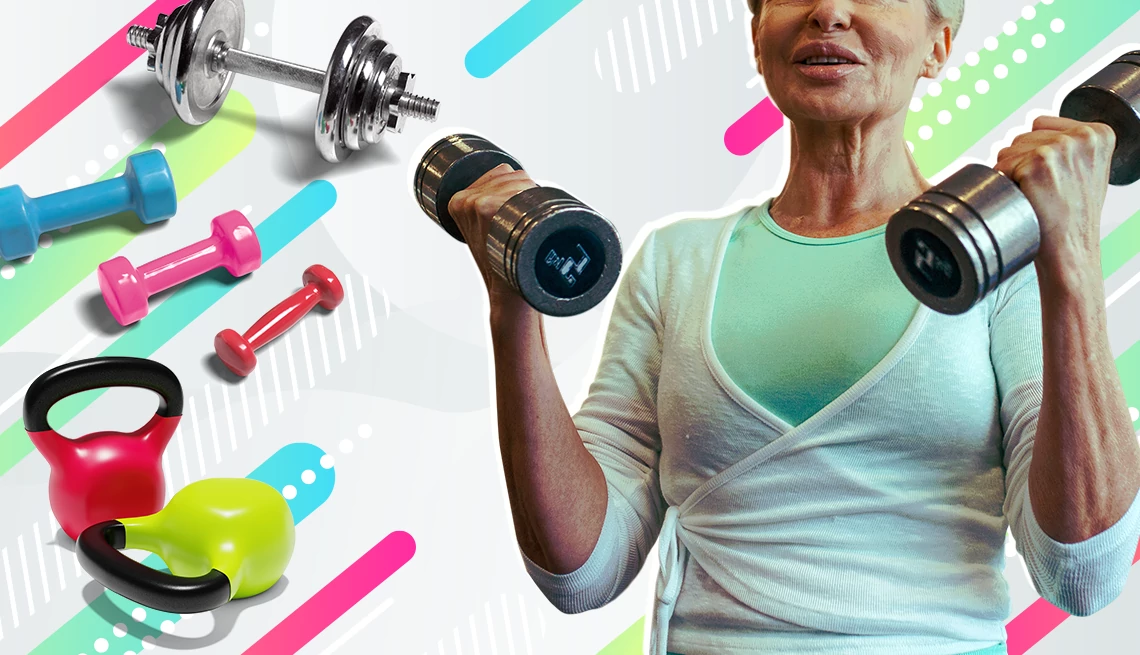
- Select a language for the TTS:
- UK English Female
- UK English Male
- US English Female
- US English Male
- Australian Female
- Australian Male
- Language selected: (auto detect) - EN
Play all audios:
More than 1 in 3 American adults is prediabetic, according to the U.S. Centers for Disease Control and Prevention. As we age, our risk of developing type 2 diabetes (T2D) increases. Changes
in skeletal muscle associated with age can decrease muscle mass, which leads to decreased insulin sensitivity (how effectively cells respond to insulin to use and stabilize blood sugar).
Studies have shown that strength training improves glycemic control (regulation of blood sugars) and blood lipid profiles in adults at risk for T2D and may help prevent or delay its onset.
In one study, moderate muscular strength was linked to a 32 percent reduction in the risk for T2D. For adults already diagnosed with T2D, regular strength training to maintain or increase
muscle mass was shown to decrease insulin resistance and reduce A1C levels — the average of blood sugar measurements over a three-month period. 4. YOU’LL MAKE YOUR HEART STRONGER The No. 1
cause of death for women in the U.S. is cardiovascular disease (CVD). Though heart disease can affect women at any age, our risk increases from ages 55 to 64, likely due to hormonal changes
after menopause. In fact, your heart can benefit significantly from weight training, whether or not you have heart disease, according to a 2023 update from the American Heart Association
(AHA). Resistance training can lower your blood pressure and blood glucose levels; improve your lipid profile; and benefit your heart by reducing fat and increasing muscle. These changes may
especially benefit older adults and those with higher cardiometabolic (CVD and diabetes) risk. Resistance training was also shown to improve endothelial function—essentially, the health of
your blood vessels — which helps control blood flow and blood pressure, and helps to prevent blood clots. The AHA recommends strength training at least twice a week. 5. YOU’LL SLEEP BETTER
Uninterrupted sleep, seven to nine hours a night, helps our brains learn and strengthens long-term memories, and reduces our risk of cardiovascular disease, diabetes, obesity and stroke. But
a good night’s sleep is an elusive goal for many women, particularly after menopause. In fact, nearly one in two women ages 40-59 wake up feeling tired at least three days a week, according
to a study on sleep duration and quality published by the CDC’s National Center for Health Statistics. Postmenopausal women were more likely to experience sleep disruptions than
premenopausal women in the same age group. Here’s where weightlifting can help. Preliminary findings by researchers at Iowa State University point to resistance training as superior to
aerobic exercise for getting better sleep. Study participants were inactive, overweight adults with high blood pressure who were randomly assigned to an exercise program: supervised
resistance or aerobic exercise only, combined resistance/aerobic exercise, or a control group with no supervised exercise. Overall, sleep improved for all groups. However, among the 42
percent who reported poor quality of sleep at the start of the study, those who did resistance training fell asleep faster and slept longer.








